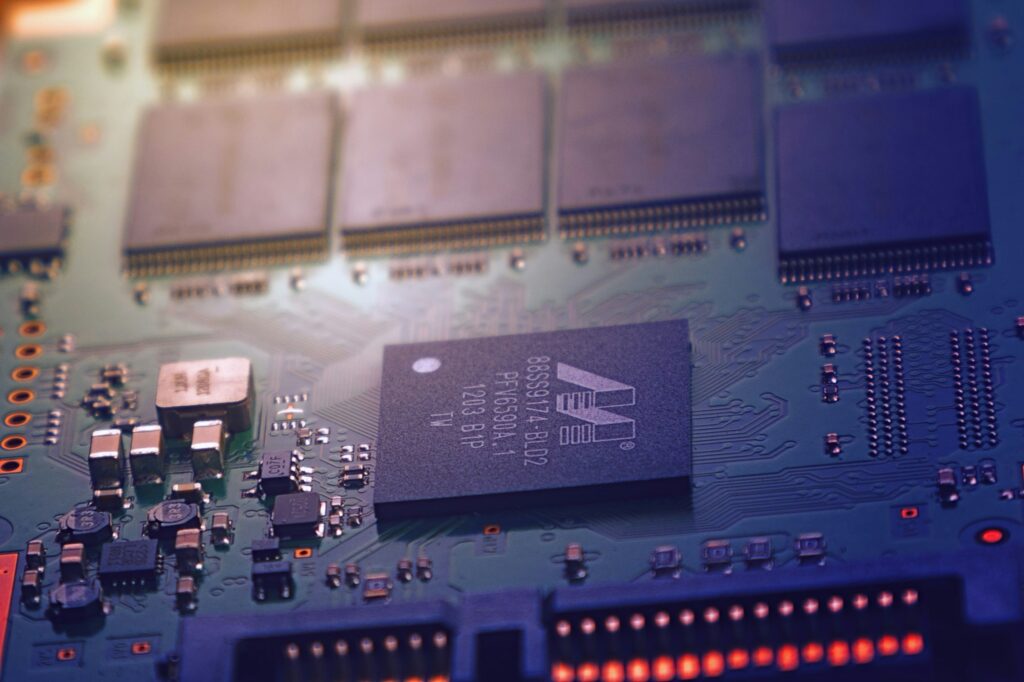
Machine Besturing
We have in-depth knowledge of systems such as Siemens, Rockwell, Schneider Electric and GE and ABB and more.


Machine control
A PLC (Programmable Logic Controller) or DCS (Distributed Control System) system can be seen as the “brain” of an automated process. It is the central point where all the data comes together, the logic is applied and the decisions are made that are necessary to keep the process running efficiently and according to the desired parameters. Supervisory Control And Data Acquisition (SCADA) systems, Human Machine Interfaces (HMI) and a wide range of sensors can be seen as the “senses” of the system. These components collect data, monitor the performance of the process and allow the operator to intervene when necessary. Actuators, cylinders, valves and motors form the “motors” of the process, they ensure that the physical actions are actually carried out, such as opening or closing valves, moving parts or lighting motors that drive production.
When these elements work together, the whole should function as a “body.” In a healthy body, the brain, senses, and motor skills work together to perform actions automatically and effectively. This also applies to automated systems: the process must run continuously, accurately, and efficiently, without constant human intervention. However, where a biological body is able to adapt and anticipate unexpected situations, machines lack this ability. Instead of anticipating itself, an automated system must be given specific instructions and logic to recognize and respond to certain circumstances. So, while the “body” of the machine has the capacity to act, it must be “told” what to do in different scenarios.
The missing element to add this anticipatory ability to machines is the extra intelligence that is needed to make the system function at a high level. This extra intelligence is something that we master like no other. Thanks to our years of experience in various industries, we have developed the expertise to optimize control systems and provide them with the necessary smart functionalities. This ensures that the process not only automates, but also behaves like a fully-fledged automated system, capable of processing changes in the circumstances in an efficient and intelligent way.
We develop the right control architecture that supports the entire process, from concept to the realization of a fully integrated solution. No detail is overlooked. Our in-depth knowledge of various control systems such as Siemens, Rockwell, Schneider Electric, GE and ABB enables us to achieve the highest level of industrial automation. Whether it is optimizing existing systems or designing completely new solutions, we ensure that the system as a whole works as one intelligent and well-oiled machine, ready to manage the production process from start to finish at the highest level.
Frequently Asked Questions
A PLC (Programmable Logic Controller) is designed to control specific machines or process components, often in smaller, standalone systems. A DCS (Distributed Control System), on the other hand, is designed for large-scale, complex processes and provides a distributed approach to control, where multiple controllers work together to manage a process as a whole.
Supervisory Control and Data Acquisition (SCADA) systems act as the interface between the operator and the automated process. They collect data from PLCs and DCS, providing real-time insight into process performance and enabling operators to intervene and issue control commands. SCADA provides monitoring, visualization and reporting of data generated by the PLC and DCS systems.
These systems provide robust and reliable solutions for industrial automation. They have a wide range of configurations and functionalities that fit different industrial applications. The use of these systems ensures a high degree of integration, scalability and the ability to communicate with various other technologies and platforms, which increases the flexibility of the system.
Integrating legacy systems with new technologies can be complex, but by using the right control architecture, communication protocols and interfaces, seamless integration can be achieved. Our engineers have experience in connecting different control systems and can develop a solution that effectively brings together existing and new technologies.
Sensors are the “senses” of an automated system. They collect data about the status of the process, such as temperature, pressure, speed and position. This data is passed on to the control system (PLC or DCS), which then takes the appropriate actions to control the process. Sensors thus provide the necessary input to make the system function and react to changes in the environment or process.
Adding extra intelligence to a control system makes it possible not only to execute processes automatically, but also to have the system anticipate changes in the process. This increases efficiency, reduces the chance of errors and allows the system to respond proactively to unforeseen circumstances, contributing to a more optimized and reliable production process.
About us



